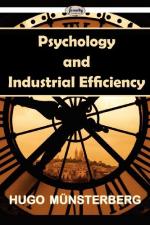The psychologist takes the same interest in the examples of window displays, sample distributions, and similar vehicles of commerce by which the offered articles themselves and not their mere picture or description are to influence the consciousness of the prospective customer. Here, too, every element may be isolated and may be brought under psychotechnical rules. The most external question would refer to the mere quantity of the presented material. The psychologist would ask how the mere mass of the offering influences the attention, how far the feeling of pleasure in the fullness, how far the aesthetic impression of repetition, how far the associative thought of a manifold selection, how far the mere spatial expansion, affects the impression. In any case, as soon as it is acknowledged as desirable to produce with certain objects the impression of the greatest possible number, the experimental psychologist stands before the concrete problem of how a manifoldness of things is to be distributed so that it will not be underestimated, perhaps even overestimated as to quantity. Again, the laboratory experiment would not proceed with real window displays or real exhibitions, but would work out the principle with the simplified experimental means.
An investigation in the Harvard laboratory, for instance, tested the influence which various factors have upon the estimation of a number of objects seen.[52] The question was how far the form or the size or the distribution makes a group of objects appear larger or smaller. The experiment was started by showing 20 small cards on a black background in comparison with another group of cards the number of which varied between 17 and 23. At first the form of these little cards was changed: triangles, squares, and circles were tried. Or the color was changed: light and dark, saturated and unsaturated colors were used. Or the order was varied: sometimes the little cards lay in regular rows, sometimes in close clusters, sometimes widely distributed, sometimes in quite irregular fashion. Or the background was changed, or the surrounding frame, or the time of exposure, and so on. Each time the subjects had to estimate whether the second group was the larger or equal or the smaller. These experiments indicated that such comparative estimation was indeed influenced by every one of the factors mentioned. If the experiments show that




